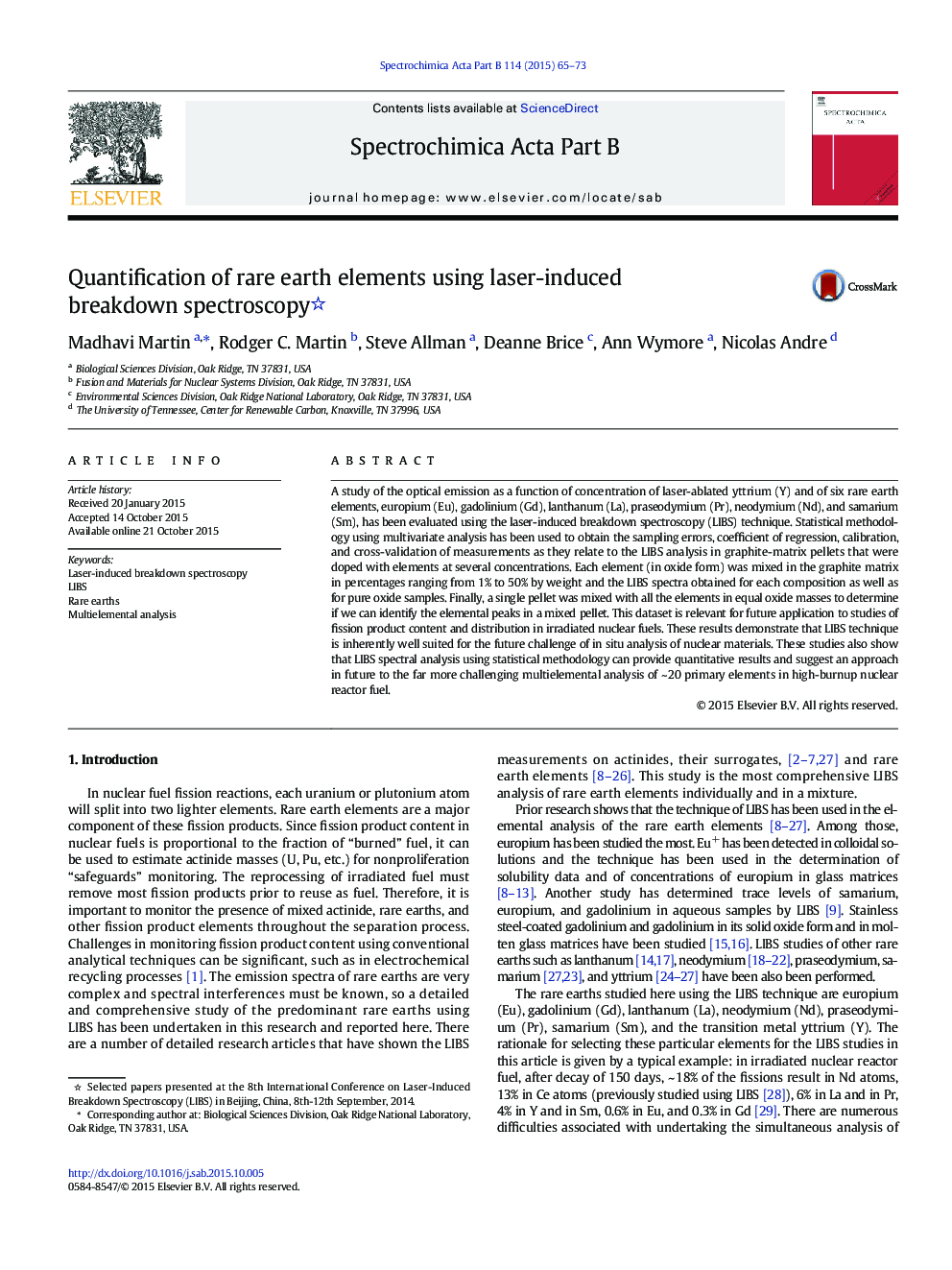| Article ID | Journal | Published Year | Pages | File Type |
|---|---|---|---|---|
| 1239770 | Spectrochimica Acta Part B: Atomic Spectroscopy | 2015 | 9 Pages |
•This research has successfully quantified rare earth elements such as Eu, Gd, La, Nd, Pr, Sm, and the metal Y.•Multivariate statistical analysis was used to show success in building a statistical model. This model can be used to determine the coefficient of regression, loading parameters, and principal components that predict the model robustness.
A study of the optical emission as a function of concentration of laser-ablated yttrium (Y) and of six rare earth elements, europium (Eu), gadolinium (Gd), lanthanum (La), praseodymium (Pr), neodymium (Nd), and samarium (Sm), has been evaluated using the laser-induced breakdown spectroscopy (LIBS) technique. Statistical methodology using multivariate analysis has been used to obtain the sampling errors, coefficient of regression, calibration, and cross-validation of measurements as they relate to the LIBS analysis in graphite-matrix pellets that were doped with elements at several concentrations. Each element (in oxide form) was mixed in the graphite matrix in percentages ranging from 1% to 50% by weight and the LIBS spectra obtained for each composition as well as for pure oxide samples. Finally, a single pellet was mixed with all the elements in equal oxide masses to determine if we can identify the elemental peaks in a mixed pellet. This dataset is relevant for future application to studies of fission product content and distribution in irradiated nuclear fuels. These results demonstrate that LIBS technique is inherently well suited for the future challenge of in situ analysis of nuclear materials. These studies also show that LIBS spectral analysis using statistical methodology can provide quantitative results and suggest an approach in future to the far more challenging multielemental analysis of ~ 20 primary elements in high-burnup nuclear reactor fuel.
